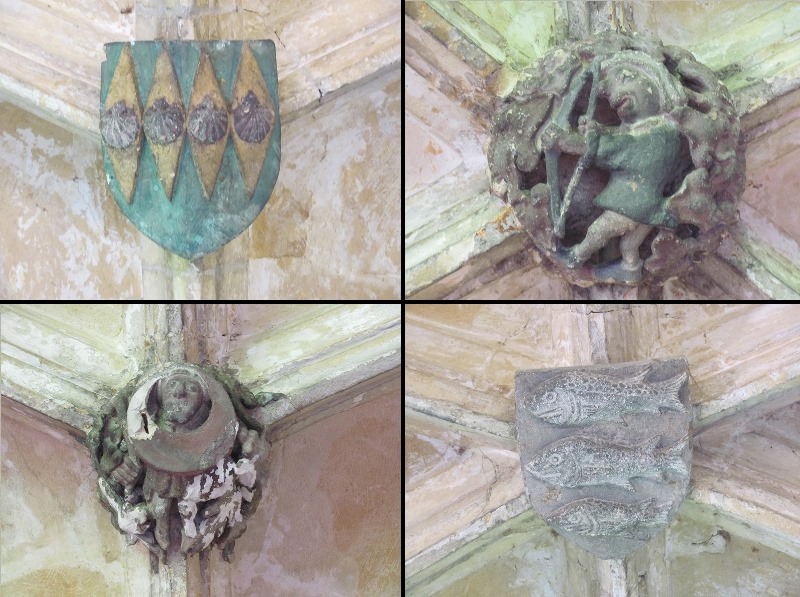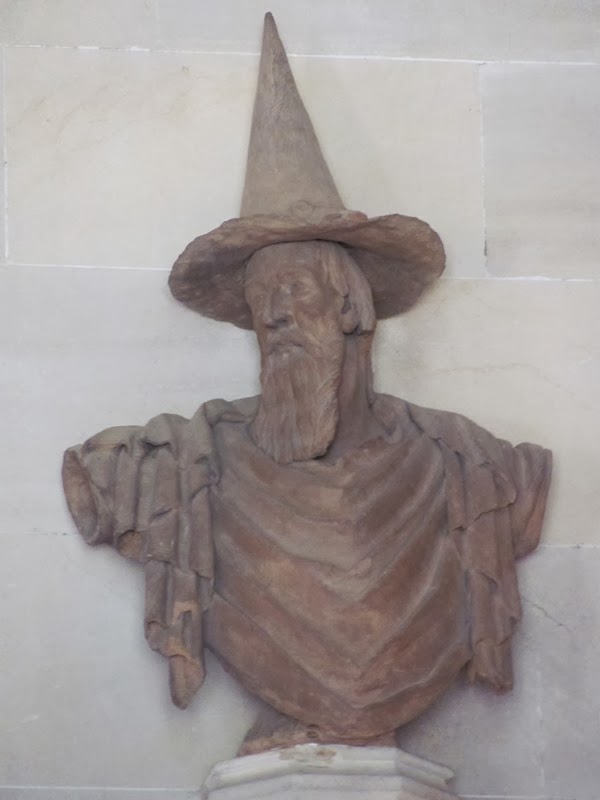Lacock Abbey is, surprisingly enough, to be found in the village of Lacock, deep in rural Wiltshire. It is, to be honest, more stately home than abbey, which makes for some variety when you visit. There's also a little museum at the entrance, which isn't covered here but should get a mention in a later blog.
The Abbey was founded by Ela, the Countess of Salisbury, in 1229, as an Augustan nunnery. In 1238 she entered the abbey as a nun herself and went on to become the Abbess in 1240. The Abbey did very well during the middle ages but in the 16th century Henry VIII dissolved the monasteries and he sold it to Sir William Sharington, who turned it into a house, demolishing the abbey church in the process. It has remained as a house since.
Inside the main building, the cloisters and many of the rooms round about it remain as they were in it's days as an abbey. Much of the building, and indeed the village, was used for some of the scenes in the Harry Potter films.
There's certainly plenty of exercise for the neck while walking through the cloisters. I spent most of the time looking up at the ceiling where the bosses make the visit worth while on their own.
They are a mixture of heraldic shields, probably of the abbeys patrons, and the stone masons' whimsy.
Most of them show signs of having been painted at one time or another - it is likely that they were originally. It certainly makes this rather savage dog a lot clearer.
A mermaid (not the only one)
Not quite sure whether this fellow is the right or wrong way round - you can decide for yourself. Either way, it's a rather cheeky pose to watch the nuns passing below you from.
There are a few masons marks around the cloisters - they're amongst the more complicated ones I've seen.
This is the chapter house where the business of the abbey would have been conducted. All you film buffs will probably be more familiar with it as the location of the Mirror of Erised in this clip.
Looking from the chapter house out onto the cloisters.
The Sacristy below is where all the church goods would have been kept when not required for a mass. In 1801 it was used to store a fire engine, hoses and bucket. As if this wasn't sacrilegious enough, it is most famous as Snape's potions classroom.
This rather mighty cauldron also makes a Harry Potter appearance (you'll
have to look for that one yourself - I couldn't find it). It has the
following written round the side of it, "a petro wagheuens in mechlina
effusus factus ue fueram anno
domini m illesimo ouingentesima deo laus etgloria cristo". It effectively says that it was made by Peter Wagheuens, who was working in Malines (or Mechelen) in Belgium around 1500
It has a great bearded character on the handles.
After the abbey there are a number of rooms to be admired with portraits galore.
The piece of paper on the keyboard says that the piano can be played for the asking. I declined - apparently it is rather out of tune.
The room I took this picture in had the shutters closed making it quite difficult to get a decent picture with my photography skills (or lack of). But I found this particular picture interesting. The frame used to contain portrait of Henry VIII by Holbein but Matilda Talbot, the last owner of the building before it was passed to the National Trust in 1944, had to sell it to pay for repairs in the village. You'd think an octagonal Holbein of Henry VIII would be easy enough to find on the net but no joy. King Henry was replaced with this portrait of John Ivory Talbot.
What makes it interesting for me is that another painting was carved up to make the portrait and they have the remains of the painting out on display too.
In the corner of the same room, taking advantage of the gloomy atmosphere, this amusing toy from the 1920s or 30s (I guess) projected rotating shadows of dancers on the walls.
John Ivory Talbot, him of the carved up painting, created this great hall in 1754-5. He commissioned Austrian sculptor Victor Alexander Sederbach to make the terracotta figures which decorate the hall. Some of the figures are people connected to the abbey. The lady you see here above the fireplace is the founder of the abbey, Ela.
Many of the figures seem to be wearing wizards hats. Seems strangely appropriate now.
This one is rather macabre.
I'm not sure this is the RSPCA recommended way to hold a goat.
In 1919 an American student who was staying here thought that it would be a wizard wheeze to put a sugar lump on the goats nose. Matilda Talbot, already mentioned, was rather amused by the whole thing and the sugar lump has remained there since. More correctly, a sugar lump has remained there since - I'm told that it is replaced periodically.
John Ivory Talbot apparently quite liked to entertain at home and stated that he would like to christen his new hall with a "sacrifice to Baccus". I think it is with him in mind that this table of cards has been set up in the hall. I think the night is somewhat advanced for the wig is off and hanging on the back of the chair.
Some heraldic glass in the halls windows.
It looks to me as if it has been made up of some older pieces of other windows.
The hall is the end of the tour and leads back out into the sunshine down this set of stairs.
A rather handsome dog sitting on the roof.
Another chance to have a look at the sphinx that I saw on the way in. It was carved by Benjamin Carter in 1755 and uses 2 surplus chimneys from the building of the hall as the columns.
It is said that on a full moon at midnight the sphinx gets down from her column and goes down to the river to drink.
This chap looks like he needs a cup of tea. Come to think of it, so do I.






















































